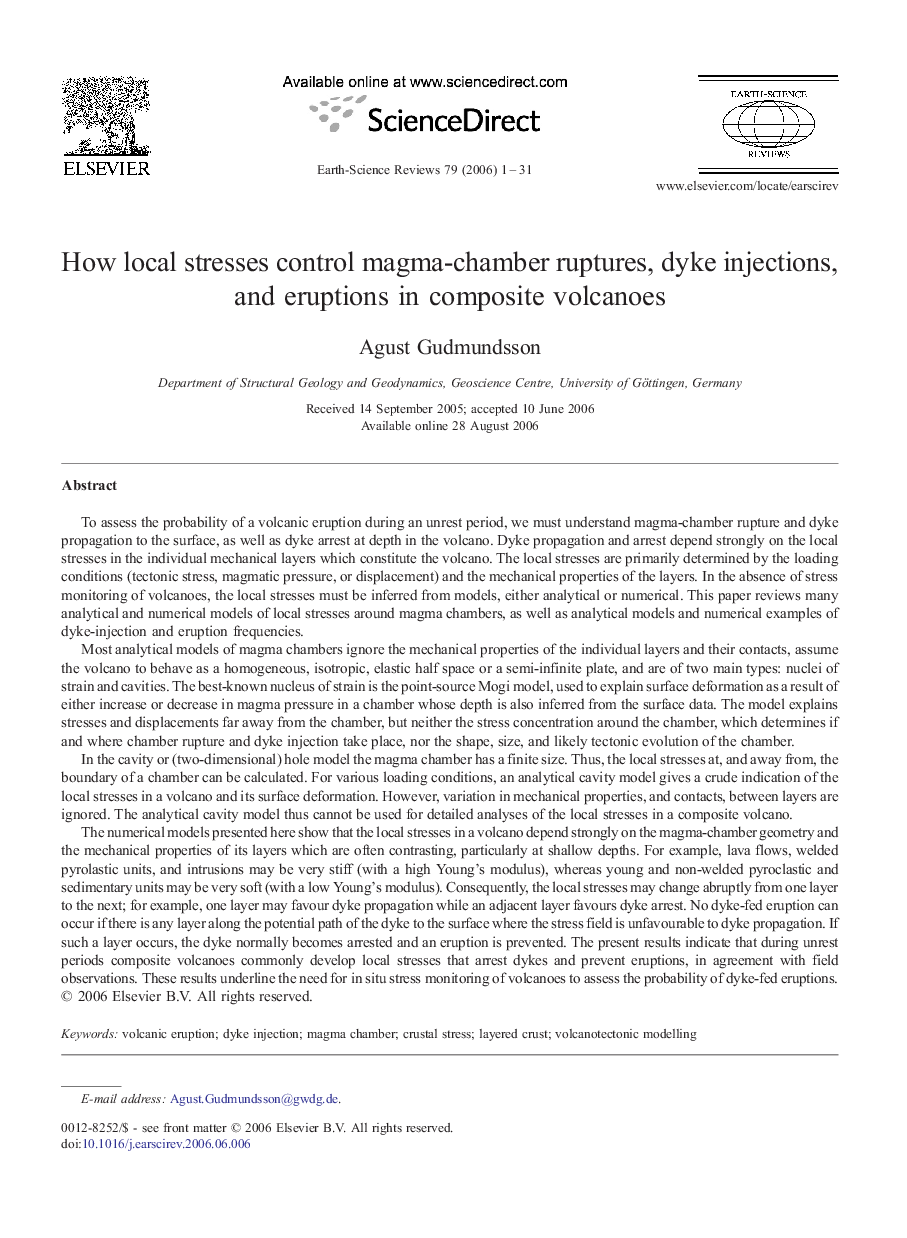| کد مقاله | کد نشریه | سال انتشار | مقاله انگلیسی | نسخه تمام متن |
|---|---|---|---|---|
| 4726437 | 1640051 | 2006 | 31 صفحه PDF | دانلود رایگان |

To assess the probability of a volcanic eruption during an unrest period, we must understand magma-chamber rupture and dyke propagation to the surface, as well as dyke arrest at depth in the volcano. Dyke propagation and arrest depend strongly on the local stresses in the individual mechanical layers which constitute the volcano. The local stresses are primarily determined by the loading conditions (tectonic stress, magmatic pressure, or displacement) and the mechanical properties of the layers. In the absence of stress monitoring of volcanoes, the local stresses must be inferred from models, either analytical or numerical. This paper reviews many analytical and numerical models of local stresses around magma chambers, as well as analytical models and numerical examples of dyke-injection and eruption frequencies.Most analytical models of magma chambers ignore the mechanical properties of the individual layers and their contacts, assume the volcano to behave as a homogeneous, isotropic, elastic half space or a semi-infinite plate, and are of two main types: nuclei of strain and cavities. The best-known nucleus of strain is the point-source Mogi model, used to explain surface deformation as a result of either increase or decrease in magma pressure in a chamber whose depth is also inferred from the surface data. The model explains stresses and displacements far away from the chamber, but neither the stress concentration around the chamber, which determines if and where chamber rupture and dyke injection take place, nor the shape, size, and likely tectonic evolution of the chamber.In the cavity or (two-dimensional) hole model the magma chamber has a finite size. Thus, the local stresses at, and away from, the boundary of a chamber can be calculated. For various loading conditions, an analytical cavity model gives a crude indication of the local stresses in a volcano and its surface deformation. However, variation in mechanical properties, and contacts, between layers are ignored. The analytical cavity model thus cannot be used for detailed analyses of the local stresses in a composite volcano.The numerical models presented here show that the local stresses in a volcano depend strongly on the magma-chamber geometry and the mechanical properties of its layers which are often contrasting, particularly at shallow depths. For example, lava flows, welded pyrolastic units, and intrusions may be very stiff (with a high Young's modulus), whereas young and non-welded pyroclastic and sedimentary units may be very soft (with a low Young's modulus). Consequently, the local stresses may change abruptly from one layer to the next; for example, one layer may favour dyke propagation while an adjacent layer favours dyke arrest. No dyke-fed eruption can occur if there is any layer along the potential path of the dyke to the surface where the stress field is unfavourable to dyke propagation. If such a layer occurs, the dyke normally becomes arrested and an eruption is prevented. The present results indicate that during unrest periods composite volcanoes commonly develop local stresses that arrest dykes and prevent eruptions, in agreement with field observations. These results underline the need for in situ stress monitoring of volcanoes to assess the probability of dyke-fed eruptions.
Journal: Earth-Science Reviews - Volume 79, Issues 1–2, November 2006, Pages 1–31